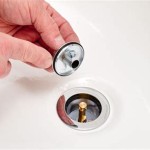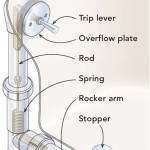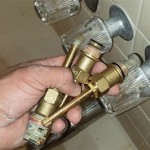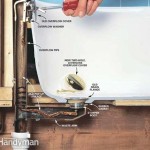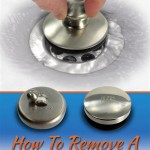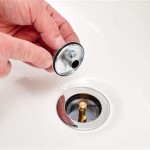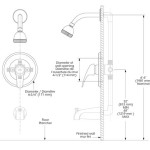How to Remove Caulking From a Bathtub
Removing old or damaged caulk from around a bathtub is a common home maintenance task. Deteriorated caulk can become unsightly, harbor mold and mildew, and compromise the watertight seal, potentially leading to water damage behind walls and under floors. Properly removing the old caulk is a crucial step before applying new caulk to ensure a clean, effective, and long-lasting seal. This article outlines the necessary tools and detailed steps for safely and efficiently removing old caulk from a bathtub.
Gathering the Necessary Tools and Materials
Before commencing the removal process, gathering the appropriate tools and materials is essential. This preparation streamlines the work and minimizes potential damage to the bathtub and surrounding surfaces. The following items should be readily available:
*Caulk Removal Tool:
Several types are available, including specialized caulk removal tools, utility knives, and oscillating multi-tools with a scraper attachment. A dedicated caulk removal tool is often the safest option, as it is designed to minimize the risk of scratching or damaging the bathtub surface. These tools typically feature a V-shaped blade that effectively cuts through the caulk. *Utility Knife:
If a dedicated caulk removal tool is unavailable, a sharp utility knife can be used. Exercise extreme caution when using a utility knife to avoid accidental cuts or scratches. It is recommended to use a new blade for a clean and precise cut. *Heat Gun or Hair Dryer:
Applying heat softens the caulk, making it easier to remove. A heat gun is more effective but must be used cautiously to avoid overheating and damaging the bathtub or surrounding materials. A hair dryer can be used as a safer alternative. *Putty Knife or Scraper:
These tools are used to pry and scrape away the softened or cut caulk. Choose a plastic putty knife to minimize the risk of scratching the bathtub surface. *Gloves:
Wearing gloves protects hands from chemicals, sharp tools, and potential irritants found in old caulk. *Safety Glasses:
Safety glasses protect eyes from debris that may fly off during the removal process. *Cleaning Supplies:
A cleaning solution like isopropyl alcohol, white vinegar, or a commercial mold and mildew remover is necessary to clean the surface after the caulk is removed. Rags or paper towels are needed to apply the cleaning solution and wipe away residue. *Soft Scouring Pad or Scrub Brush:
A soft scouring pad or scrub brush assists in removing stubborn caulk residue without damaging the bathtub surface *Vacuum Cleaner:
A vacuum cleaner with a hose attachment is helpful for removing loose caulk debris and dust generated during the removal process.Step-by-Step Guide to Removing Old Caulk
The removal process should be approached systematically to ensure complete removal of the old caulk without damaging the underlying surfaces. Careful execution of each step is crucial for a successful outcome:
Preparation: Begin by thoroughly cleaning the area around the bathtub where the caulk is to be removed. Remove any soap scum, mildew, or other debris that may interfere with the removal process. Ensure the area is dry before proceeding.
Softening the Caulk: Apply heat to the old caulk to soften it. If using a heat gun, hold it several inches away from the caulk and move it slowly along the length of the caulk bead. Avoid concentrating the heat in one spot for too long, as this can damage the bathtub surface or surrounding materials. If using a hair dryer, direct the heat onto the caulk for several minutes. The caulk should become noticeably softer and more pliable.
Cutting the Caulk: Use a caulk removal tool or a utility knife to carefully cut along both edges of the caulk bead. When using a utility knife, hold the blade at a shallow angle to avoid digging into the bathtub or tile. Apply steady, even pressure to create a clean cut along the entire length of the caulk. For stubborn, thicker caulk, several passes may be necessary. The goal is to separate the caulk from the surfaces it adheres to.
Prying and Scraping: Once the caulk is cut, use a putty knife or scraper to gently pry it away from the bathtub and wall. Start at one end of the caulk bead and work your way along its length. Apply steady, even pressure to lift the caulk without scratching the surface. If the caulk is difficult to remove, reapply heat and try again. In some cases, the caulk may come off in long strips. In other cases, it may come off in smaller pieces.
Removing Stubborn Residue: After removing the bulk of the caulk, some residue may remain on the bathtub and wall surfaces. Use a soft scouring pad or scrub brush and a cleaning solution to remove this residue. Isopropyl alcohol, white vinegar, or a commercial caulk remover can be effective. Apply the cleaning solution to the affected area and let it sit for a few minutes to soften the residue. Then, gently scrub the area with the scouring pad or brush until the residue is removed. Rinse the area with water and dry thoroughly.
Cleaning and Disinfecting: Once all the caulk and residue have been removed, thoroughly clean and disinfect the area. Apply a mold and mildew remover to kill any remaining spores that may be present. Follow the manufacturer's instructions for application and dwell time. Rinse the area with water and dry thoroughly. This step is crucial for preventing future mold and mildew growth.
Vacuuming and Inspection: Vacuum the area to remove any remaining caulk debris, dust, or particles. Pay particular attention to corners and crevices where debris may accumulate. Inspect the area carefully to ensure that all old caulk has been removed. If any residue or small pieces of caulk remain, repeat the cleaning and scrubbing process until the surface is completely clean and smooth.
Addressing Specific Caulking Conditions
Different types of caulk and varying degrees of deterioration require specific approaches to ensure effective removal without causing damage. Recognizing these conditions and adapting the removal technique accordingly is essential.
Heavily Molded or Mildewed Caulk
Caulk that is heavily molded or mildewed can pose a health hazard and may be more difficult to remove. In such cases, take extra precautions to protect oneself from exposure to mold spores. Wear a respirator mask in addition to gloves and safety glasses. Before removing the caulk, apply a generous amount of mold and mildew remover to the affected area and let it sit for an extended period to kill the mold and loosen the caulk. Dispose of the removed caulk in a sealed plastic bag to prevent the spread of mold spores. After removing the caulk, thoroughly disinfect the area and allow it to dry completely before applying new caulk.
Silicone Caulk
Silicone caulk is known for its strong adhesion and flexibility, which can make it more challenging to remove than other types of caulk. Special silicone caulk removers are available that can help soften and break down the silicone, making it easier to scrape away. These removers typically contain solvents that dissolve the silicone. Follow the manufacturer's instructions for application and dwell time. In some cases, multiple applications may be necessary to fully soften the silicone. Be patient and persistent, and avoid using excessive force, which can damage the bathtub or surrounding surfaces.
Caulk Applied Over Uneven Surfaces
When caulk is applied over uneven surfaces, such as textured tiles or irregular corners, it can be more difficult to cut and remove cleanly. Use a flexible caulk removal tool or a utility knife with a flexible blade to conform to the contours of the surface. Cut the caulk in small sections, carefully following the contours of the uneven surface. Use a small, pointed tool, such as a dental pick or a small screwdriver, to remove caulk from tight corners and crevices. Take extra care to avoid scratching or damaging the surrounding surfaces.
Old and Brittle Caulk
Caulk that is very old and brittle may crumble or break apart during the removal process. In such cases, it may be necessary to apply heat more frequently to soften the caulk and make it more pliable. Use a soft brush or vacuum to remove loose pieces and debris as they accumulate. Be prepared to spend more time cleaning up the area after the removal process. Consider using a caulk softener specifically designed for aged caulk before attempting removal to aid in the process to make the task at hand a little easier.
By following these steps and adapting the techniques to suit the specific conditions of the caulk, one can successfully remove old caulk from a bathtub and prepare the surface for a fresh application, ensuring a watertight and aesthetically pleasing seal.

How To Remove Caulk Ace Hardware

How To Remove Old Caulk Dap Global

How To Remove Caulk From Tub Diy Family Handyman

How To Remove Caulk Ace Hardware

Stop Water Damage Re Caulk Your Tub Today 1 Tom Plumber

How To Remove Silicone Sealant Diy Guide Removing Old Beginners Removal

How To Remove Caulk From Tub Diy Family Handyman
How To Remove Silicone Caulk Best Method

How To Caulk A Bathtub 13 Steps With Pictures Wikihow

How To Remove And Replace Your Tub Shower Caulk Anderson Lumber
Related Posts

